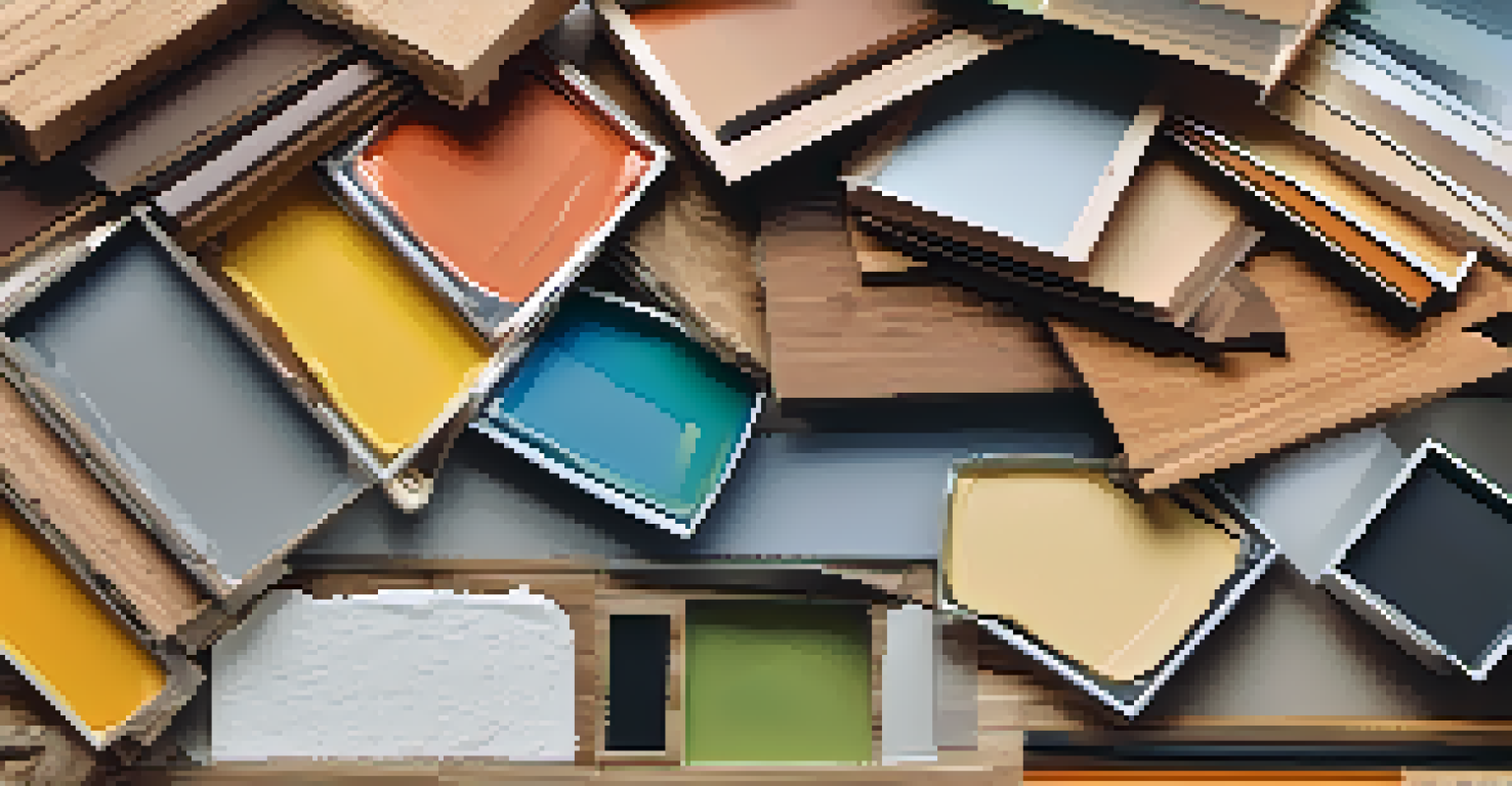Sustainable Home Maintenance: Tips for Longevity

Understanding Sustainable Home Maintenance Practices
Sustainable home maintenance is about caring for your living space while considering environmental impact. This approach not only helps reduce waste but also promotes energy efficiency. By adopting sustainable practices, homeowners can extend the lifespan of their property, making it both greener and more cost-effective in the long run.
The greatest threat to our planet is the belief that someone else will save it.
For example, using eco-friendly materials for repairs and renovations can significantly reduce your carbon footprint. Simple choices, like opting for low-VOC paints or sustainable flooring options, can make a big difference. Understanding these practices is the first step toward maintaining a home that is both sustainable and comfortable.
Ultimately, sustainable home maintenance is about balance—finding the sweet spot between caring for your home and the planet. It’s not just a trend; it’s an essential way of living that respects our resources. By getting familiar with these concepts, you’re on your way to making smarter choices for your home.
Regular Inspections for Early Problem Detection
One of the best ways to maintain a sustainable home is through regular inspections. By checking for issues like leaks, cracks, or mold early on, you can avoid costly repairs down the line. Just like visiting a doctor for check-ups, your home deserves the same attention to ensure everything is functioning correctly.

For instance, inspecting your roof for missing shingles or your gutters for debris can prevent significant water damage. It’s often easier to fix small problems before they escalate into major headaches. Plus, these inspections can help you stay aware of your home’s overall condition, allowing for timely interventions.
Embrace Sustainable Practices
Adopting eco-friendly materials and methods in home maintenance can significantly reduce environmental impact while enhancing property longevity.
Incorporating seasonal inspections into your routine can keep your home in tip-top shape. Setting reminders for these inspections can save you time and money in the future. After all, it's better to catch a problem early than to deal with a much bigger issue later on.
Choosing Eco-Friendly Materials for Repairs
When it comes to repairs and renovations, the materials you choose can have a significant impact on sustainability. Opting for eco-friendly materials not only benefits the environment but also enhances your home's longevity. Think about using recycled materials or those sourced from sustainable forests.
Sustainability is not about how much we can put into the world, but how much we can take out without destroying it.
For example, reclaimed wood can add character to your home while reducing demand for new lumber. Similarly, low-impact insulation materials like sheep’s wool or cellulose can improve energy efficiency. By selecting these materials, you contribute to a healthier planet and a more durable home.
Moreover, using sustainable materials often means fewer toxins in your living space. This can lead to improved indoor air quality, making your home a safer place for your family. In short, the right materials can make a world of difference.
Energy Efficiency: A Key Component of Sustainability
Energy efficiency is not just a buzzword; it’s a crucial part of sustainable home maintenance. By making your home more energy-efficient, you reduce your utility bills while also minimizing your carbon footprint. Simple changes, like upgrading to energy-efficient appliances or adding insulation, can lead to substantial savings.
For instance, switching to LED lighting can cut your energy consumption dramatically. Additionally, smart home technology can help you monitor and manage energy use effectively. These small changes accumulate over time, resulting in both environmental benefits and cost savings.
Regular Inspections Prevent Issues
Conducting seasonal inspections helps identify and address minor problems before they escalate into costly repairs.
Ultimately, investing in energy efficiency enhances the longevity of your home by reducing wear and tear on systems. It’s a win-win situation: you save money, and your home remains comfortable and sustainable. Embracing energy efficiency is a step forward on the path to a greener lifestyle.
Water Conservation Techniques for Your Home
Water conservation is another vital aspect of sustainable home maintenance. By implementing water-saving techniques, you not only reduce your environmental impact but also lower your water bills. Simple actions, such as fixing leaks promptly or installing low-flow fixtures, can make a significant difference.
For example, collecting rainwater in barrels can provide a free source for watering your garden. Similarly, using drought-resistant plants can minimize the need for frequent watering. These strategies not only conserve water but also create a more resilient landscape.
Incorporating these practices into your daily routine fosters a culture of sustainability within your home. It’s about being mindful of how much water you use and finding creative ways to reduce consumption. By prioritizing water conservation, you contribute to the overall health of our planet.
Maintaining Your Home's Exterior for Longevity
The exterior of your home is your first line of defense against the elements, making its maintenance crucial for longevity. Regular upkeep, such as cleaning gutters and pressure washing surfaces, can prevent larger issues down the road. A well-maintained exterior not only looks good but also protects your home from potential damage.
For instance, neglecting to clean gutters can lead to water damage and even foundation issues. Similarly, ensuring that your siding is in good shape can prevent pests from entering your home. Making these maintenance tasks a part of your routine will keep your home looking its best and functioning effectively.
Create a Maintenance Schedule
Establishing a structured maintenance schedule ensures that essential tasks are completed on time, promoting a healthy and sustainable home.
Additionally, using sustainable materials for exterior maintenance, such as eco-friendly paints or natural sealants, can further enhance your home’s durability. It’s a proactive approach that pays off in the long run. Remember, a little maintenance goes a long way in preserving your home’s exterior.
Creating a Sustainable Home Maintenance Schedule
Having a sustainable home maintenance schedule can simplify the upkeep process and ensure nothing gets overlooked. By planning ahead, you can allocate time for inspections, repairs, and seasonal tasks. This organized approach fosters a culture of sustainability and helps keep your home in top shape.
For example, setting reminders for seasonal tasks like gutter cleaning or HVAC servicing can prevent problems from developing unnoticed. You might also consider a checklist that outlines monthly, quarterly, and yearly maintenance tasks. This way, you can track what needs to be done and when.

Ultimately, a well-structured maintenance schedule promotes accountability and reduces stress. You’ll feel more in control of your home’s upkeep and can enjoy the peace of mind that comes with knowing your space is cared for. It’s a smart strategy to ensure longevity for your home while embracing sustainability.